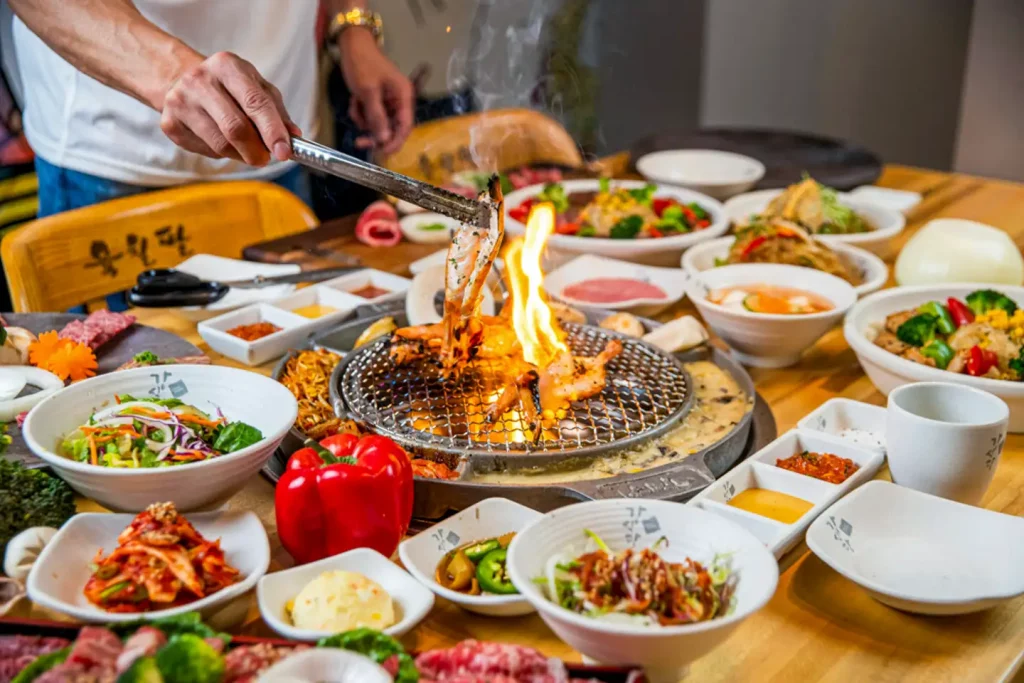A Culinary Pilgrimage to Stillness
Korean food has taken the world by storm over the last decade—fiery kimchi stews, fried chicken chains, and dramatic street food stalls have all gone viral. But in 2025, a quieter, more mindful form of Korean cuisine is capturing the attention of travelers: temple food.
Temple cuisine in South Korea, or sachal eumsik, is rooted in Buddhist monastic tradition, based on seasonal vegetables, wild herbs, and fermented sauces. What sets it apart isn’t just what’s on the plate—but the philosophy behind it. No garlic, no onion, no artificial flavors. Every dish is an offering, every bite a lesson in awareness. As global tourism shifts toward wellness, sustainability, and meaning, temple food has emerged as the serene antidote to fast-paced K-pop culture and meat-heavy K-BBQ joints.
What began as a niche experience offered to religious pilgrims has grown into one of Korea’s most transformative travel trends. From mountaintop temples hosting cooking retreats to Seoul restaurants offering temple-inspired tasting menus, monastic food is redefining what it means to taste Korea.
The Rise of Sacred Plant-Based Cuisine
The appeal of temple cuisine in 2025 lies in its purity and its purpose. With Gen Z and Millennial travelers increasingly prioritizing wellness, vegan options, and culinary storytelling, South Korea’s spiritual food traditions are finding a fresh following.
Unlike commercialized vegan food trends, temple food doesn’t mimic or substitute—it celebrates simplicity. Meals are centered around namul (wild greens), seasonal roots, and naturally fermented condiments like doenjang (soybean paste) and ganjang (soy sauce). A temple meal often includes up to 20 small plates, each carefully prepared to balance yin and yang, salt and sour, texture and aroma. There’s no deep-frying, no processed ingredients, no sugar rush—just calm, complex flavor drawn from soil and time.
In 2024, UNESCO officially listed Korean temple cuisine as an Intangible Cultural Heritage, and the ripple effect has grown. International food bloggers are now documenting their stays at temples like Baekyangsa, where the revered monk-chef Jeong Kwan still offers seasonal menus. Michelin Guide Korea has started referencing temple-style plates in its new wellness dining category. And most significantly, South Korea’s Ministry of Culture has rolled out grants to support temple food programs in all 17 provinces.
From Cooking Class to Mindfulness Retreat
What sets temple food apart isn’t just what you eat, but how you learn it. In 2025, temple food experiences have evolved into immersive cooking and lifestyle retreats, where visitors don’t just cook—they reflect, chant, and reconnect.
Temples like Golgulsa near Gyeongju or Magoksa in Gongju offer weekend workshops where guests live as novice monks. The day starts with a dawn bell ceremony, continues through silent forest walks, and leads to hands-on time in the temple kitchen—learning how to knead buckwheat dough or ferment radish with respect and slowness. Each step, from washing vegetables to plating a dish, becomes a kind of moving meditation.
At Jeondeungsa Temple near Incheon, travelers can now enroll in “Culinary Mindfulness” retreats that integrate breathing practices with food preparation. Participants grind sesame by hand, steam mountain greens over wood fire, and learn to serve meals without waste. No phones. No talking during meals. Just stillness.
As global interest in slow travel and introspective experiences grows, these programs have started attracting not just foodies, but burnt-out tech workers, digital nomads, and wellness seekers looking for emotional clarity. For many, temple food isn’t just a meal—it’s a mirror.
Temple Tastes Go Mainstream in Seoul
Not every traveler is ready to spend three days without WiFi at a monastery. That’s where Korea’s urban culinary scene steps in. Across Seoul, temple-inspired restaurants and cafes are rising in popularity, especially in neighborhoods like Insadong, Bukchon, and Seochon.
At Baru Gongyang, tucked behind the Jogyesa Temple, diners sit on floor cushions to enjoy an artfully composed baru meal—the ceremonial style of monastic dining served in minimalist bowls. The experience includes instructions on how to eat without waste, gratitude chants, and a menu of lotus-root salad, black sesame tofu, and wild mushroom broth. It’s a rare restaurant that asks you to eat slower, not faster.
Other spots like Sanchae Kitchen and Monk’s Table reinterpret temple flavors in creative ways—introducing barley risotto with mountain herbs, or beet-fermented kimchi rolls. These spaces often double as community centers, hosting fermentation classes and mindful eating workshops.

This growing presence in urban culture speaks to a broader shift. In 2025, Korean youth are increasingly embracing plant-forward diets, not out of trend, but out of tradition. And visitors are catching on. Culinary tourism no longer ends at spicy tteokbokki or barbecue galbi. It now includes the quiet ritual of serving one another warm lotus porridge.
Why Global Foodies Are Paying Attention
So why has temple food caught the global palate’s attention? Because it sits at the intersection of everything today’s conscious traveler craves: authenticity, wellness, sustainability, and storytelling.
From a sustainability perspective, temple cuisine is hyperlocal and zero-waste by design. Chefs use foraged herbs, make their own soy sauces over years, and reuse vegetable scraps in broths. In a time when food carbon footprints matter, this philosophy feels revolutionary.
From a cultural angle, temple food bridges spiritual history and culinary technique. Dishes aren’t just recipes—they’re living traditions passed down through centuries. Some ingredients, like fermented pine needles or mugwort root, aren’t found in modern supermarkets. Others, like perilla seeds or acorn jelly, are used in ways that reflect seasonal balance and spiritual clarity.
And emotionally, temple food answers a deep hunger that goes beyond taste. In an overstimulated world, a bowl of warm rice served with silence can feel profound.
This depth is why food-focused tour companies like Intrepid, Context Travel, and even Airbnb Experiences have added temple food options to their 2025 South Korea itineraries. It’s also why Jeong Kwan, once featured on Netflix’s Chef’s Table, continues to inspire global chefs from Copenhagen to New York.
Planning a Temple Food Journey in 2025
If you’re curious to taste and learn, here are some of the best places to begin:
- Baekyangsa Temple (Jeolla Province)
Arguably the most famous temple food site in Korea, thanks to Jeong Kwan. While long-term stays are limited, seasonal tours with food demos are offered for visitors. - Golgulsa Temple (Gyeongju)
A dynamic program that includes sunmudo martial arts, meditation, and culinary classes. Guests help prepare shared vegetarian meals and participate in mealtime rituals. - Jeondeungsa Temple (Incheon)
Popular for short retreats accessible from Seoul. Offers temple food workshops with optional forest bathing and calligraphy classes. - Baru Gongyang (Seoul)
The best urban experience of ceremonial temple dining. A reservation-only, prix fixe lunch or dinner with full explanation of Buddhist food ethics. - Sanchae Kitchen (Seoul)
A modern café blending traditional temple ingredients with creative flair. Great for travelers with limited time but curious palates. - Culinary Hanok Stays (Jeonju, Andong)
Boutique guesthouses in heritage villages now offer temple food-inspired breakfasts alongside cultural storytelling. Perfect for slow travel.
Tips for travelers: Book temple stays at least two weeks in advance, especially during public holidays. Be prepared for shared sleeping quarters, early wake-up calls, and no-alcohol policies. If you have allergies or dietary restrictions, most temple kitchens are happy to accommodate—but it’s best to notify them early.
A Journey That Fills More Than Your Stomach
To taste temple food in Korea is to taste quiet. It’s to understand that a single pickled fern can hold centuries of wisdom. It’s about learning to chew mindfully, to cook with reverence, and to listen to your body and the earth.
In 2025, as travel continues to tilt toward the meaningful and restorative, temple cuisine offers not only a meal—but an experience of soul-nourishment. For Roamcox readers who crave flavor with depth, who seek cultural memory in each bite, who want to travel slower and wiser—temple food is a path worth taking.
It may begin with a bowl of wild mushroom stew. But it ends with a clearer mind, a lighter body, and a new way of seeing the world.





















